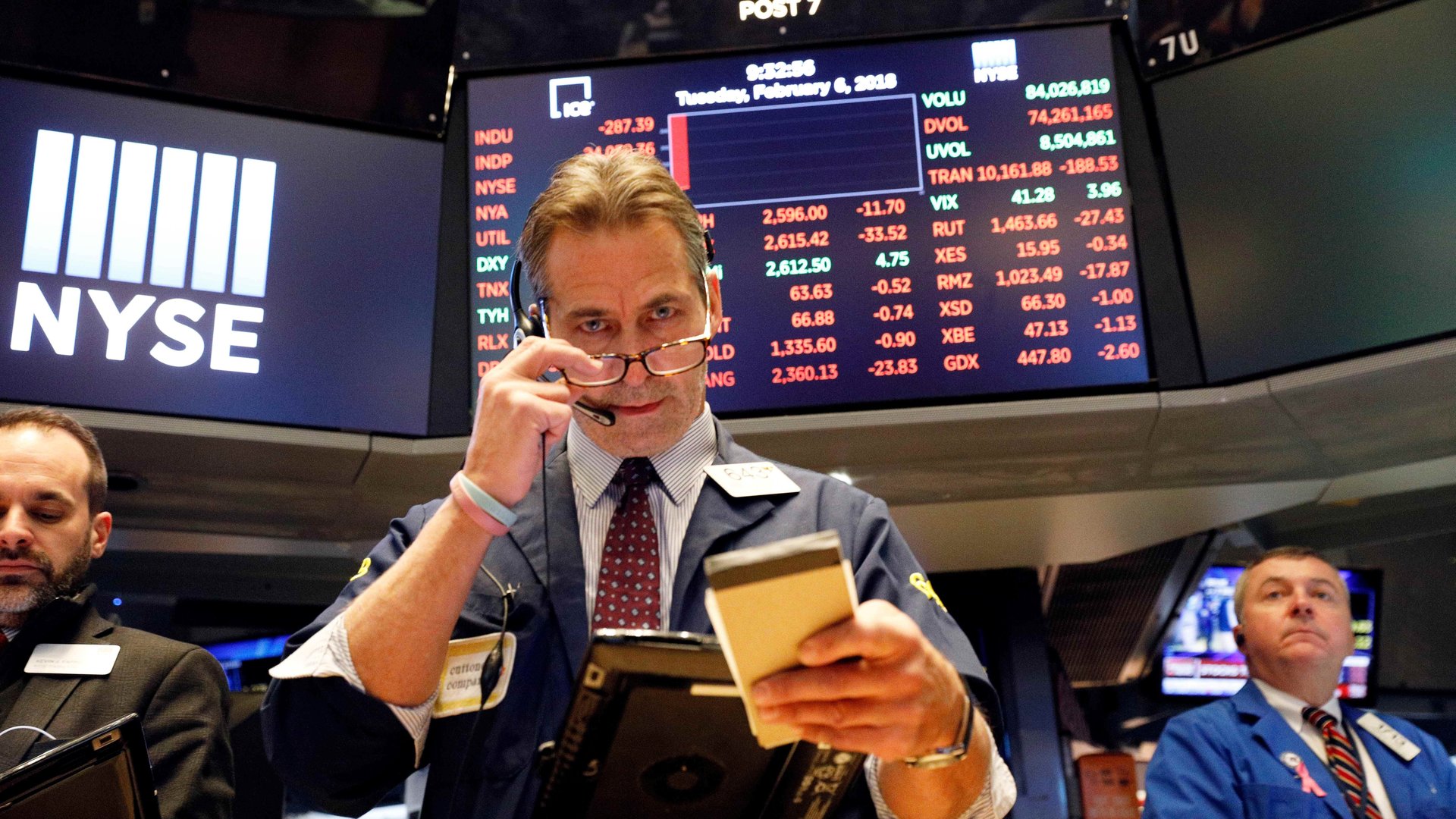This week, financial markets stopped being boring
Who flipped the switch? After a seemingly endless bull run, stocks around the world shed trillions of dollars in market value this week. The Dow saw its largest point decline ever during a trading day, and the S&P 500 fell more than 100 points.


Who flipped the switch? After a seemingly endless bull run, stocks around the world shed trillions of dollars in market value this week. The Dow saw its largest point decline ever during a trading day, and the S&P 500 fell more than 100 points.
Markets are no longer boring—and it’s likely they’ll stay interesting. After reaching historic lows and remaining quiet for the better part of the past year, the market’s gauge for future price swings (volatility) this week reached levels unseen since 2015.
A variety of factors kickstarted the panic. After years of job gains and falling employment, workers are finally getting raises. There are signs that the three-decade bull run for bonds is coming to an end. Jerome Powell, a former banker and lawyer, took over the reins of the US Federal Reserve.
All of this means that inflation, anemic since the financial crisis, could finally pick up. If it does, global central banks will likely raise rates, making once-easy money more expensive. Just yesterday (Feb. 9), the Bank of England confirmed it would raise rates further and faster than anticipated. The prospect of pricier loans makes companies unhappy.
But in a way, very little has changed. Unemployment is steadily declining, hitting a nine-year low. Companies continue to report expectations-beating earnings as EPS forecasts grow. Inflation, in many countries, still remains low. Interest rates will rise in the near future, but we’ve also known this for a while.
For new, inexperienced investors, this week’s correction was likely devastating (paywall). But zoom out, and the fresh reversal in fortunes stings less. If you’d invested $100 in the S&P 500 in early 2009, you’d now be $250 richer, even though the index, over the same period, has corrected four times.
Big investors think the global economy is in good shape. Goldman Sachs Asset Management is forecasting ongoing growth that filters through to the world’s smaller economies, according to Kathleen Hughes. Altaf Kassam of State Street Global Advisors says the markets’ recent rally to record highs was built on solid fundamentals like corporate earnings growth.
“The rug hasn’t been pulled out,” he says.
Kassam might be right. In the last hours before markets closed, the tides are already turning. Major indices, like the S&P 500 and Dow, are on the rise.
This is the nature of markets—at times they swing expectedly. But mostly, they move in logic-defying, irrational ways.
So this is your wake-up call: Markets are not risk-free.
Correction: A previous version of this post said $1 invested in the S&P 500 in early 2009 would have left you $250 richer. One hundred dollars invested then would have left you $250 richer.